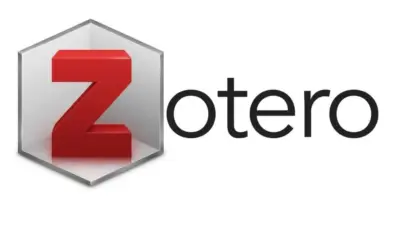Libraries are the bedrock of learning and research, but managing the vast amount of resources they contain can be a daunting task. This is where a Library Management System (LMS) comes into play. An LMS is a software-based solution designed to handle all the operations of a library efficiently. Whether you’re a librarian, a student, or just a curious individual, understanding how an LMS works can significantly enhance your interaction with libraries. This blog post “How Library Management System Works?” will explore the fundamentals of a Library Management System, its key features, and how it streamlines library operations.
What is a Library Management System?
A Library Management System (LMS) is a software tool used to manage the catalog of a library. This includes the acquisition, cataloging, circulation, and inventory of library materials. Libraries use LMS to increase efficiency, reduce errors, and provide better services to patrons. An LMS can manage various media types including books, journals, magazines, digital media (e-books and online journals), audiovisual equipment, and more.
In-Depth Look at How a Library Management System Works
Understanding the inner workings of a Library Management System (LMS) can help you appreciate how it transforms a traditional library into a modern, efficient, and user-friendly facility. Here’s a deeper dive into the specific functionalities and processes involved in an LMS.

1. User Management
- Registration and Profiles: When a new patron or staff member joins the library, they are registered in the LMS. This involves entering their personal information into the system, which creates a unique account. This account helps in tracking their activities, such as borrowing, fines, and reservations.
- Role-Based Access Control: The LMS assigns different roles and permissions to users based on their status (e.g., librarian, assistant, patron). This ensures that staff have the necessary tools and permissions to perform their tasks, while maintaining security and privacy.
2. Acquisition Module
- Order Management: Librarians can place orders for new books and materials directly through the LMS, which keeps a record of these orders, tracks their progress, and updates the inventory once received.
- Vendor Management: The LMS can store information about suppliers and vendors, track past transactions, and evaluate vendor performance based on delivery and the quality of goods.
3. Cataloging Module
- Metadata Entry: Each new item is cataloged in the LMS by creating a digital record that includes all necessary metadata such as title, author, ISBN, publication year, and subject headings.
- Classification and Indexing: The system uses library standards like Dewey Decimal or Library of Congress Classification to organize materials. Indexing allows for easy searching and retrieval of information within the system.
4. Circulation Module
- Check-in and Check-out: The LMS automates the check-out process by scanning barcodes or RFID tags, automatically updating the patron’s account and the item’s status. When items are returned, the check-in process updates the system accordingly.
- Fines and Fees: If items are overdue, the LMS automatically calculates fines based on predefined rules and adds these to the patron’s account. It also manages payments of fines and fees.
5. Inventory Management
- Stock Verification: The system can assist in physical stock verification by comparing physical stock with the digital catalog and flagging discrepancies.
- Weeding and Updating: The LMS helps manage the weeding out of old or damaged items and supports the decision-making process by providing usage statistics and current condition reports.
6. Search and Retrieval
- Advanced Search Options: Users can search the catalog using various filters such as keywords, authors, titles, or publication dates. This makes finding resources faster and more accurate.
- Online Public Access Catalog (OPAC): An OPAC allows patrons to search the library’s collection from any location via the internet, view their account status, and make reservations or renewals online.
7. Reports and Analytics
- Custom Reports: The LMS can generate reports on almost any aspect of the library’s operations, such as circulation statistics, popular titles, patron activity, and more.
- Analytics: Data from various modules can be analyzed to discover trends, plan purchases, or improve services.
8. Integration with Other Systems
- Interlibrary Loan (ILL): LMS systems can communicate with each other to facilitate interlibrary loans, expanding access to resources that are not available locally.
- Digital Resource Management: Integration with digital resource management systems allows seamless access to e-books, databases, and other digital resources.
Benefits of Using an LMS
1. Efficiency
- Automating routine tasks reduces the workload on staff and increases operational efficiency, allowing more time for customer service and other critical tasks.
2. Accuracy
- An LMS reduces human errors in cataloging, record-keeping, and circulation, which enhances the reliability of the library’s data.
3. Accessibility
- Many LMS solutions offer cloud-based platforms that can be accessed remotely, making it easier for users to access resources anytime, anywhere.
4. Improved User Experience
- By streamlining the search and lending processes, an LMS can significantly enhance user satisfaction and engagement.

Choosing the Right LMS
When selecting an LMS, consider the following factors:
- Scalability: The system should grow with your library’s needs.
- User-friendly Interface: Ensure the interface is intuitive for both patrons and staff.
- Support and Maintenance: Reliable customer support and regular updates are crucial.
- Cost: Consider both upfront and ongoing costs in relation to your budget and expected return on investment.
- Integration: The system should integrate seamlessly with other tools and technologies used in the library.
Implementing an LMS
Implementation of an LMS requires careful planning and execution:
- Requirement Gathering: Understand the needs and challenges of your library.
- System Selection: Choose an LMS that fits your requirements and budget.
- Data Migration: Safely transfer existing data to the new system.
- Training: Train staff and patrons on how to use the new system effectively.
- Go Live: Deploy the system and provide support to address any issues.
Also Read: Zotero: A Beginner’s Guide



